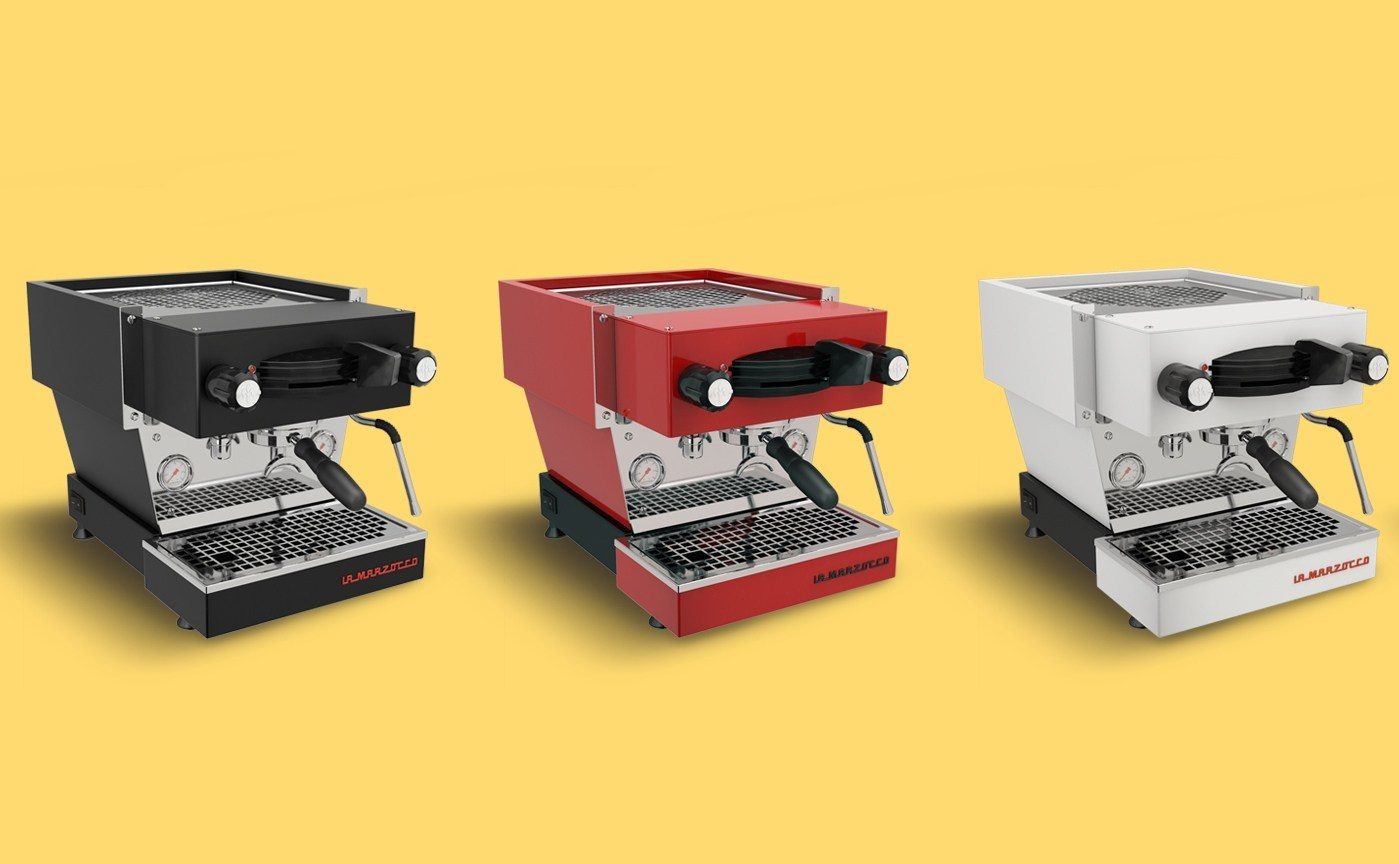7 Luxury Coffee Machines To Know
Whether you’re an amateur barista or just want caffeine on tap – here are some of the best coffee machines.
Working from home may mean that you’re missing your favourite cafe and that coffee pods just aren’t cutting it. With a newfound need for barista skills and the best equipment for the job, here are seven of the best and most beautiful coffee machines on the market.
Kees Van Der Westen – Speedster
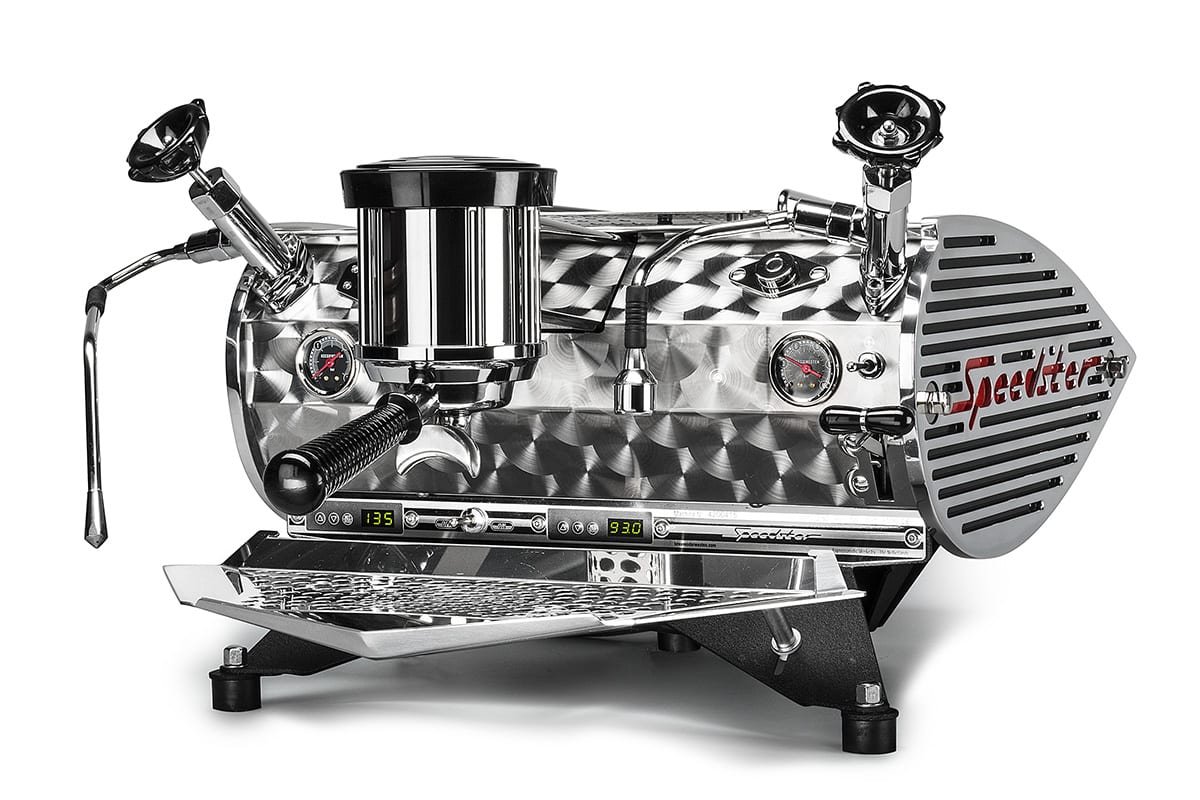
The Speedster is a café favourite, often spotted racing coffees out the door of your favourite local. They’ve got this nifty number for the home complete with, shot timer, eco-mode for efficiency, two temperature-controlled boilers a large steam and coffee boiler capacity all made from high-grade stainless steel and stunning engine turned body panels.
$15,995; keesvanderwesten.com
Rocket Espresso – Porta Via
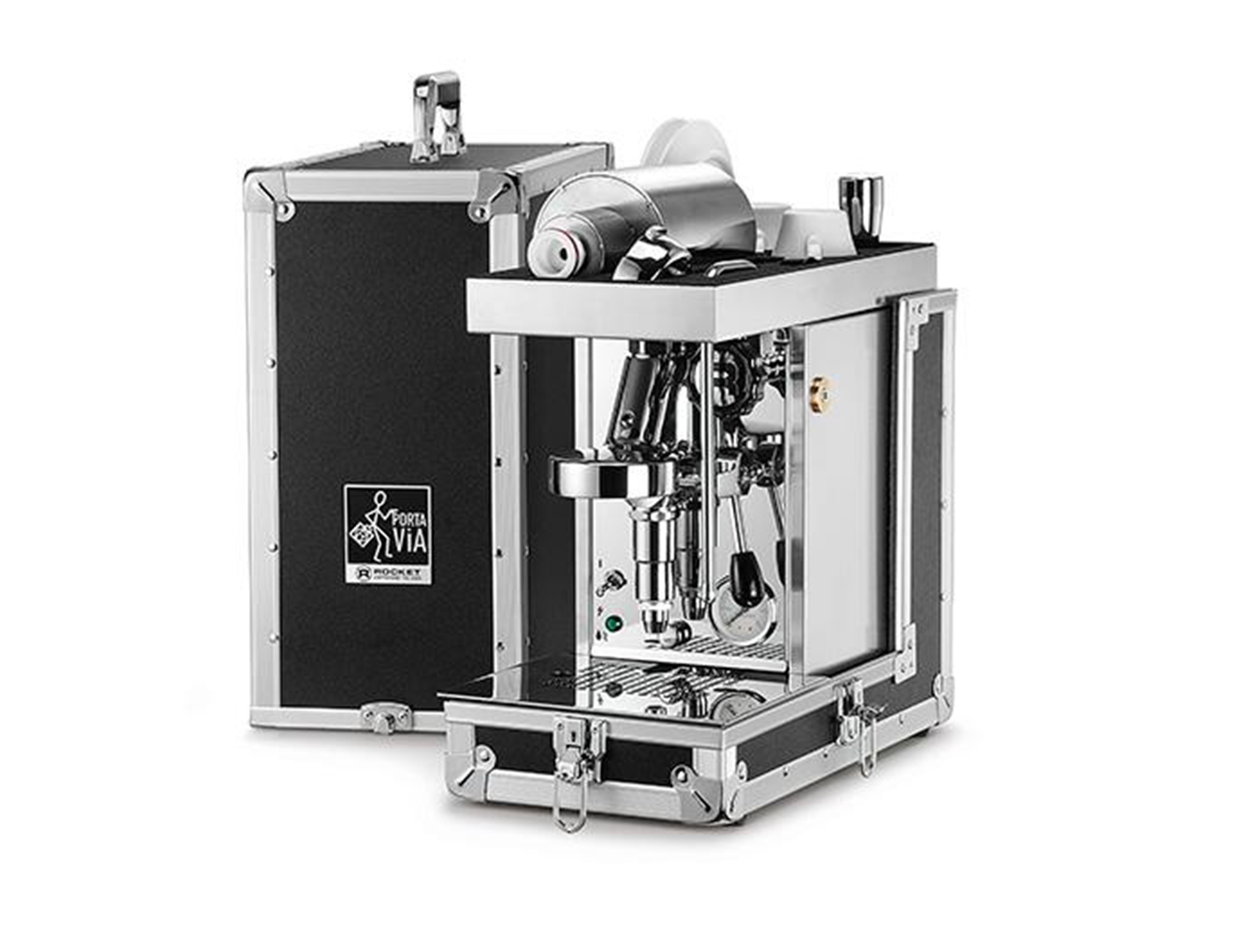
The Porta Via brings new meaning to ‘coffee to go’, the industrial quality coffee machine is built into a hard-wearing carry case making it a portable addition to your kitchen. At 29kg it comes with a lever-action group, pressure gauge and coffee boiler and is rapidly ready for a brew in 10 minutes.
$4299; espressocompany.com.au
Jura – GIGA 6
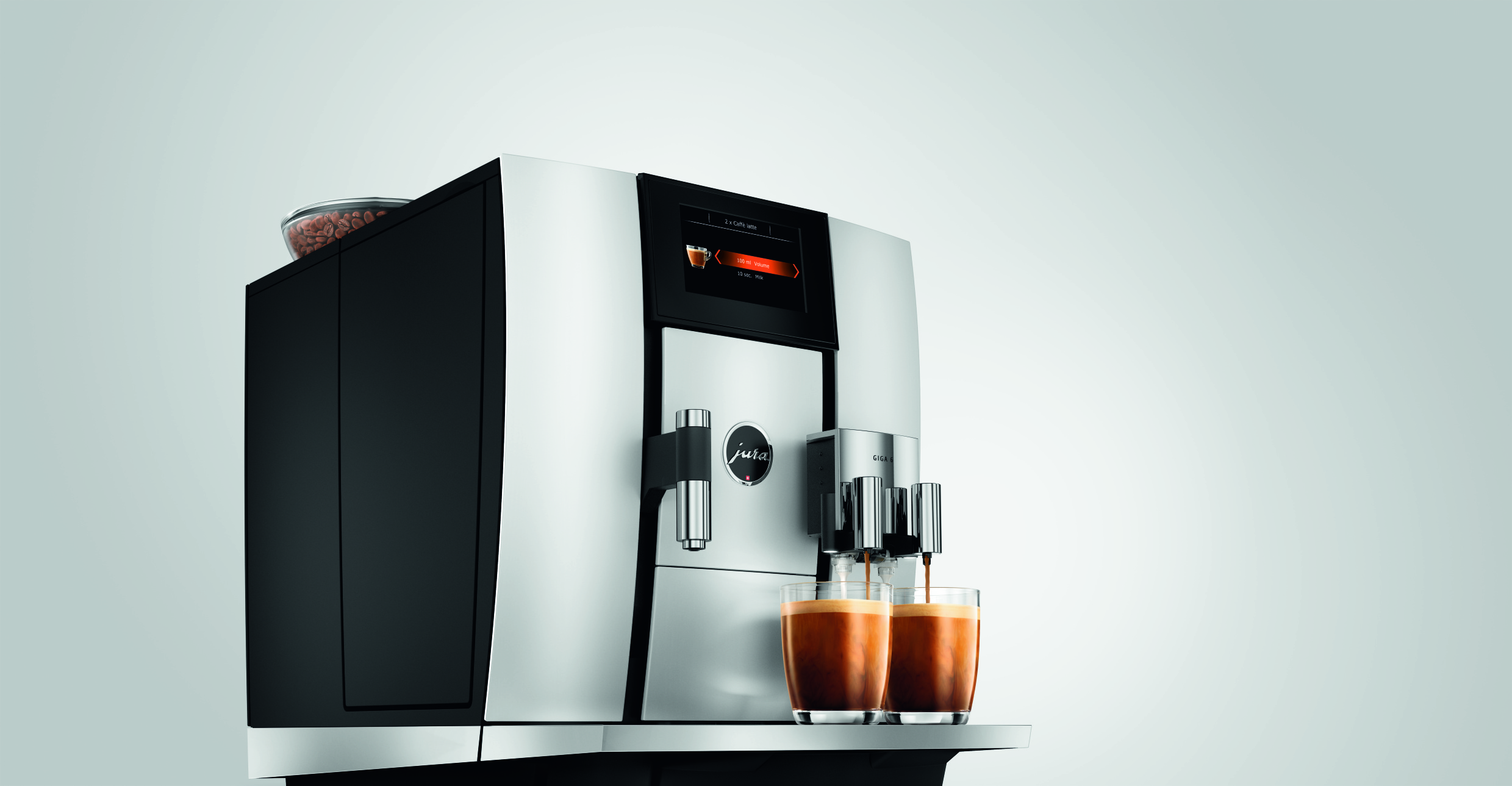
For a ‘hands off’ coffee, it’s hard to look past the Jura Giga 6. The scope of the GIGA 6 is impressive, it boasts 28 different specialties, all at the press of its 4.3-inch high-res display. It’s perfect for those who want everything automated, just load the twin hoppers with your beans of choice and select. Or better still, just order through the Jura App or tell Siri to make it for you.
$6490; jura.com
La Marzocco – Linea Mini
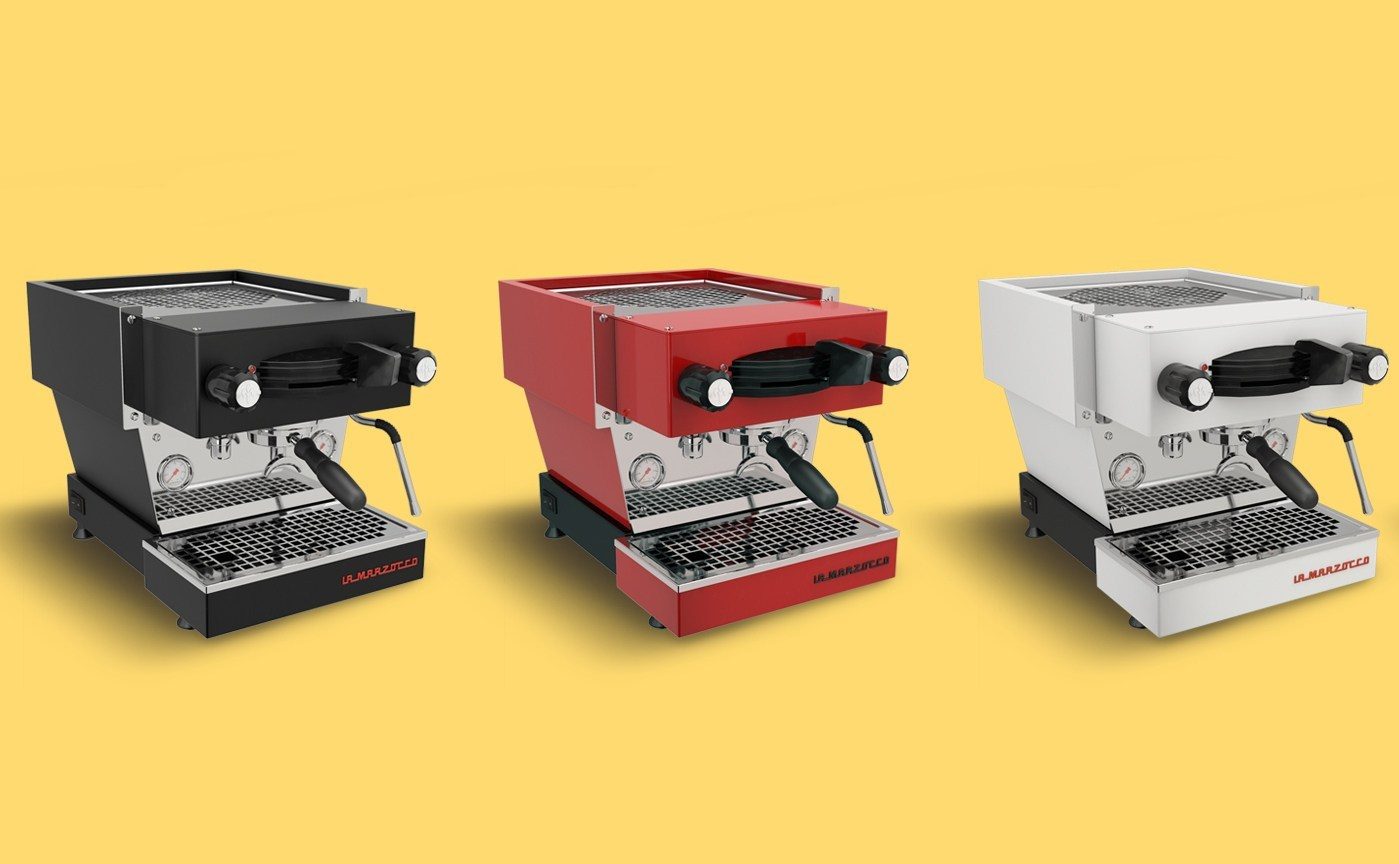
La Marzocco is the industry standard in café quality machines – with its history dating back almost 100 years to the streets of Florence. These fun little machines are perfect for home use with its simple controls, easy-to-read gauges, in-built temperature controller all bundled into a tidy package available in a range of bright colours.
$5990; lamarzocco.com
Gaggenau – 400 Series Coffee Machine
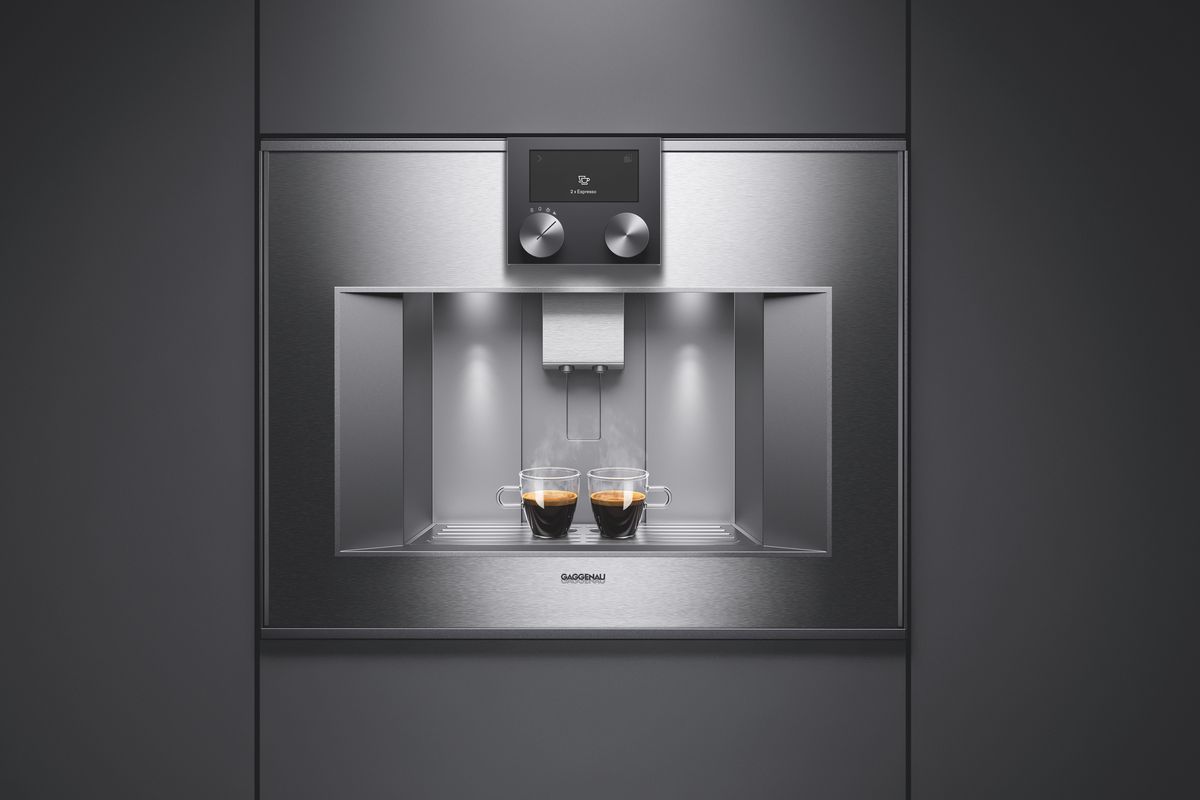
While all the coffee machines on this list try to be design-conscious, none are at the level of the built-in Gaggenau 400 Series. Its subtle design is coupled with tech that’s smart enough to remember eight specific orders and make near limitless combinations. The fully automatic, self-cleaning espresso machine allows for professional standard coffee, instantly and with minimal effort and with Gaggenau’s ‘home connect’ can literally take the process out of your hands.
$6999; gaggenau.com
Superveloce – Flat Six
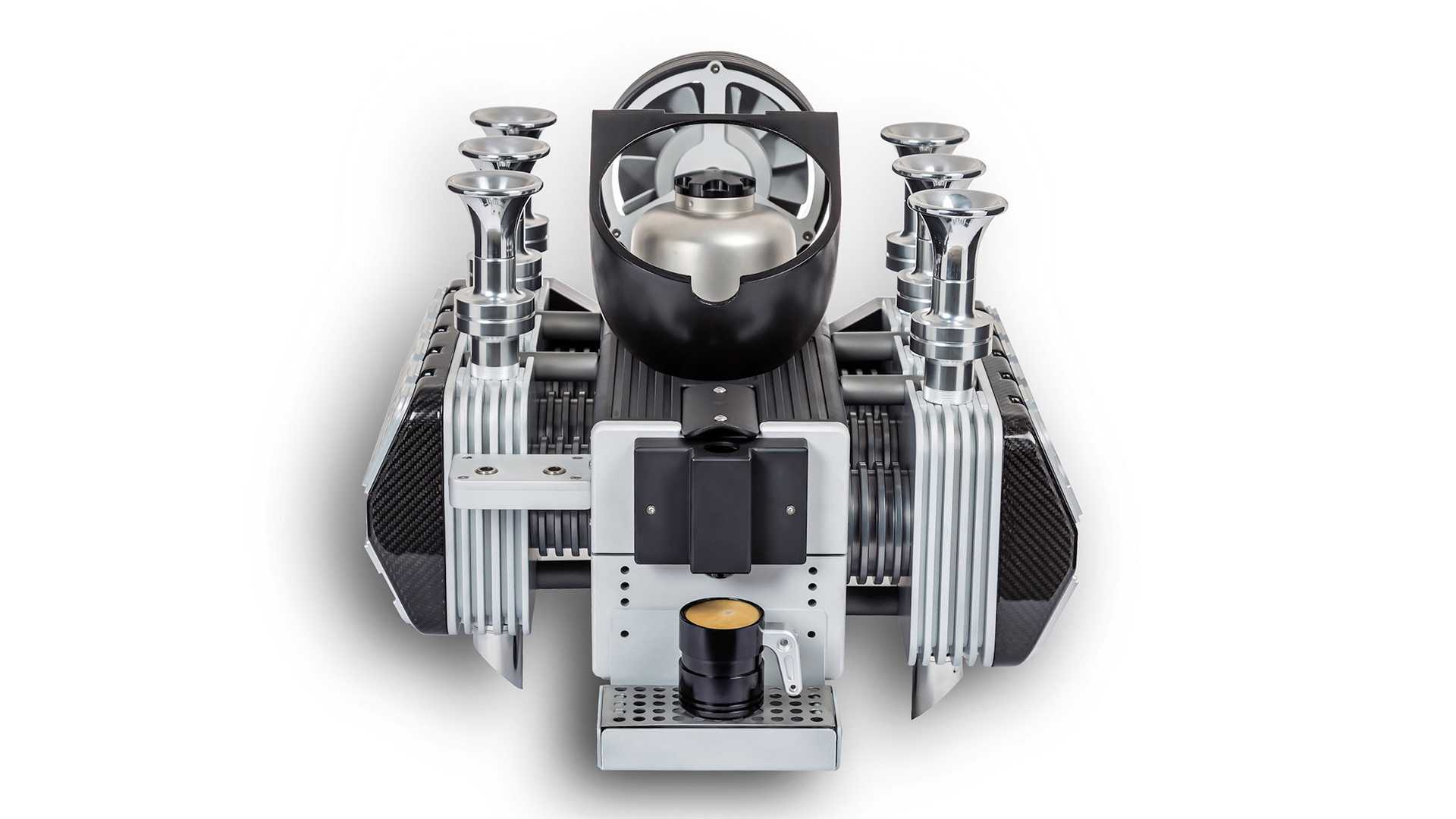
You may have seen its Porsche inspired coffee machine doing the rounds, but beyond homages to German engineering, Superveloce makes a number of motoring and aeronautically inspired machines. Take the Flat-Six, with its Boxer Engine inspired stainless steel, titanium and alloy construction and carbon fibre cam cover. Just load it with your ground beans, or favourite capsule of choice and let the machine do the work.
Approx. $15,690; Superveloce.co
Slayer Espresso – Slayer Single Group
 A coffee machine that shares the name of such an infamous heavy metal band is sure to have some guts about it. Commercial-grade head, steam valves and brew actuator combine with a touchscreen interface to blur the lines between café and home use while the ash wood handles, and actuators and stainless-steel finishes give it a handsome look.
A coffee machine that shares the name of such an infamous heavy metal band is sure to have some guts about it. Commercial-grade head, steam valves and brew actuator combine with a touchscreen interface to blur the lines between café and home use while the ash wood handles, and actuators and stainless-steel finishes give it a handsome look.
$13,500; slayerespresso.com
This stylish family home combines a classic palette and finishes with a flexible floorplan
Just 55 minutes from Sydney, make this your creative getaway located in the majestic Hawkesbury region.
As Paris makes its final preparations for the Olympic games, its residents are busy with their own—packing their suitcases, confirming their reservations, and getting out of town.
Worried about the hordes of crowds and overall chaos the Olympics could bring, Parisians are fleeing the city in droves and inundating resort cities around the country. Hotels and holiday rentals in some of France’s most popular vacation destinations—from the French Riviera in the south to the beaches of Normandy in the north—say they are expecting massive crowds this year in advance of the Olympics. The games will run from July 26-Aug. 1.
“It’s already a major holiday season for us, and beyond that, we have the Olympics,” says Stéphane Personeni, general manager of the Lily of the Valley hotel in Saint Tropez. “People began booking early this year.”
Personeni’s hotel typically has no issues filling its rooms each summer—by May of each year, the luxury hotel typically finds itself completely booked out for the months of July and August. But this year, the 53-room hotel began filling up for summer reservations in February.
“We told our regular guests that everything—hotels, apartments, villas—are going to be hard to find this summer,” Personeni says. His neighbours around Saint Tropez say they’re similarly booked up.
As of March, the online marketplace Gens de Confiance (“Trusted People”), saw a 50% increase in reservations from Parisians seeking vacation rentals outside the capital during the Olympics.
Already, August is a popular vacation time for the French. With a minimum of five weeks of vacation mandated by law, many decide to take the entire month off, renting out villas in beachside destinations for longer periods.
But beyond the typical August travel, the Olympics are having a real impact, says Bertille Marchal, a spokesperson for Gens de Confiance.
“We’ve seen nearly three times more reservations for the dates of the Olympics than the following two weeks,” Marchal says. “The increase is definitely linked to the Olympic Games.”

Getty Images
According to the site, the most sought-out vacation destinations are Morbihan and Loire-Atlantique, a seaside region in the northwest; le Var, a coastal area within the southeast of France along the Côte d’Azur; and the island of Corsica in the Mediterranean.
Meanwhile, the Olympics haven’t necessarily been a boon to foreign tourism in the country. Many tourists who might have otherwise come to France are avoiding it this year in favour of other European capitals. In Paris, demand for stays at high-end hotels has collapsed, with bookings down 50% in July compared to last year, according to UMIH Prestige, which represents hotels charging at least €800 ($865) a night for rooms.
Earlier this year, high-end restaurants and concierges said the Olympics might even be an opportunity to score a hard-get-seat at the city’s fine dining.
In the Occitanie region in southwest France, the overall number of reservations this summer hasn’t changed much from last year, says Vincent Gare, president of the regional tourism committee there.
“But looking further at the numbers, we do see an increase in the clientele coming from the Paris region,” Gare told Le Figaro, noting that the increase in reservations has fallen directly on the dates of the Olympic games.
Michel Barré, a retiree living in Paris’s Le Marais neighbourhood, is one of those opting for the beach rather than the opening ceremony. In January, he booked a stay in Normandy for two weeks.
“Even though it’s a major European capital, Paris is still a small city—it’s a massive effort to host all of these events,” Barré says. “The Olympics are going to be a mess.”
More than anything, he just wants some calm after an event-filled summer in Paris, which just before the Olympics experienced the drama of a snap election called by Macron.
“It’s been a hectic summer here,” he says.

AFP via Getty Images
Parisians—Barré included—feel that the city, by over-catering to its tourists, is driving out many residents.
Parts of the Seine—usually one of the most popular summertime hangout spots —have been closed off for weeks as the city installs bleachers and Olympics signage. In certain neighbourhoods, residents will need to scan a QR code with police to access their own apartments. And from the Olympics to Sept. 8, Paris is nearly doubling the price of transit tickets from €2.15 to €4 per ride.
The city’s clear willingness to capitalise on its tourists has motivated some residents to do the same. In March, the number of active Airbnb listings in Paris reached an all-time high as hosts rushed to list their apartments. Listings grew 40% from the same time last year, according to the company.
With their regular clients taking off, Parisian restaurants and merchants are complaining that business is down.
“Are there any Parisians left in Paris?” Alaine Fontaine, president of the restaurant industry association, told the radio station Franceinfo on Sunday. “For the last three weeks, there haven’t been any here.”
Still, for all the talk of those leaving, there are plenty who have decided to stick around.
Jay Swanson, an American expat and YouTuber, can’t imagine leaving during the Olympics—he secured his tickets to see ping pong and volleyball last year. He’s also less concerned about the crowds and road closures than others, having just put together a series of videos explaining how to navigate Paris during the games.
“It’s been 100 years since the Games came to Paris; when else will we get a chance to host the world like this?” Swanson says. “So many Parisians are leaving and tourism is down, so not only will it be quiet but the only people left will be here for a party.”
This stylish family home combines a classic palette and finishes with a flexible floorplan
Just 55 minutes from Sydney, make this your creative getaway located in the majestic Hawkesbury region.









